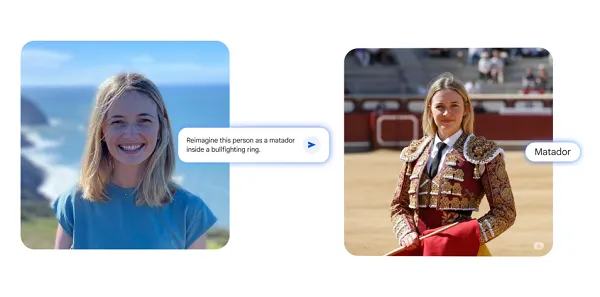How Grid Studio transforms forgotten tech into works of art
Grid Studio is on a mission to give discarded tech a second lease on life by transforming it into a work of art. Here's how.

Grid Studio specializes in transforming old tech into art. It’s the type of company you see in Instagram ads when a major holiday is approaching — and I mean that in the best way possible, along the lines of minimalist movie posters and sheet metal artwork. But the final product goes far beyond being another frame you can hang on your wall.
Just seeing one of Grid Studio’s pieces can bring back a sea of memories, but nostalgia isn’t all Grid Studio is gunning for. In honor of Earth Day, I spoke with one of the co-founders of Grid Studio and got my hands on a couple of frames to understand how the company keeps forgotten tech from ending up in the trash.
From landfill to frame
 Jacob Roach / Digital Trends
Jacob Roach / Digital TrendsIt’s one thing to take a device apart and put it into a frame, but that’s not the point of Grid Studio. The company’s tagline, “every classic deserves to be framed,” sets the mark for what types of products Grid Studio goes after and the purpose they serve when they’re turned into art.
“I’m a crazy tech fan. To me, a device that doesn’t work anymore is not trash. It’s still precious,” said Joe Allen, one of three co-founders of Grid Studio. Instead of going after new products, Grid Studio focuses exclusively on devices that would end up in a landfill, and those that can strike a particular vein of nostalgia.
The business functions on the back of old devices that no longer work. Allen said that all devices that are eventually transformed into frames come “from repairers and retro collectors,” ensuring that Grid Studio isn’t ruining a device that is still functional.
These are device that were used and loved, and now that they have reached their end of life, they can be appreciated.
When one user asked if Grid Studio still used working devices, the response from the company was clear: “That’s insane.”
It was something I noticed even on the frames Grid Studio sent out to me. The PSP 1000 frame, for example, came with a joystick that was broken. And although Grid Studio goes a long way to clean up devices before framing, the Game Boy’s mainboard showed corroded capacitors and rusted edges. It isn’t a deterrent; it’s a celebration. These are device that were used and loved, and now that they have reached their end of life, they can be appreciated.
Although Grid Studio has grown since it launched in 2020, the business started as a side project. One of the three co-founders took apart a device on “a whim,” carefully painting and gluing the components to paper. After seeing the final result, the three went in to make a business out of the hobby.
The process remains the same — Grid Studio takes apart broken devices, carefully lays out the components, and packages them as art. And they’re built to hang on your wall for years. Grid Studio uses all original components, but the company opts for models in the case of batteries, which may pose a risk down the line.
A flood of nostalgia
 Jacob Roach / Digital Trends
Jacob Roach / Digital TrendsGrid Studio helps save discarded tech, but the company goes a long way beyond preservation. Each piece feels like a work of art, and the fine details drum up a flood of nostalgia.
For me, that nostalgia is for handheld gaming devices, though Grid Studio focuses primarily on mobile devices and Apple products. It cropped up in the strangest spots, too. The PSP 1000’s UMD tray brought back memories of sliding in Metal Gear Acid. The backside of the Game Boy’s frame helped me recall road trips when I filled the Pokédex in Pokémon Red and moved up levels in The Bugs Bunny Crazy Castle with a pack of AA batteries by my side.
 Jacob Roach / Digital Trends
Jacob Roach / Digital TrendsThe devices do the heavy lifting, but Grid Studio is careful to support the nostalgia trip. The Game Boy frame, for example, is furnished with NES-era labels for each of the components that brought back the endless sounds of bit-crushed audio. Contrast that with the iPhone 4s frame, which features a minimalist design accented with Steve Jobs’ famous “connect the dots” quote.
Grid Studio may be preserving devices, but it’s the critical juncture of turning them into works of art that “can bring memories, surprises, and happiness.” From themed and meticulous labeling to the wax seal that holds the cover of each frame, these pieces work to celebrate devices beyond making sure they have a life outside of a landfill.
An evolving era
 Jacob Roach / Digital Trends
Jacob Roach / Digital TrendsWhen I spoke with Grid Studio, this is what stuck with me most: “They will also be a gentle reminder of this evolving era.” It’s no secret that e-waste poses a massive threat to the climate, and Grid Studio conducts itself with that in mind. “We carry out our business with the aim of saving resources and protecting the environment.”
It’s not a solution, though. It’s important to remember that e-waste is only a small part of how the tech we love impacts the environment — most of the problem comes from manufacturing, which is something that Grid Studio can’t solve. No matter how many frames Grid Studio ships, new devices will still be made and old devices will still end up in a trash pile.
While you take a trip down memory lane, hopefully Grid Studio can be a reminder of that — even when a device has worn out its welcome, it’s still something that can be celebrated. Grid Studio isn’t solving the e-waste crisis. But it shows that a little creativity can have a positive impact.

 Kass
Kass 


































